Please send in your wildlife photos! I have enough for a week or so, but the need is constant!
Today we have photos of Australian reptiles taken by reader Chris Taylor. His captions and IDs are indented, and you can enlarge the photos by clicking on them.
I thought that I would share photos of some of the reptiles that I have encountered.
There are three orders of reptile in Australia: Crocodilia (crocodiles), Testudines (Turtles), and Squamata (Lizards and Snakes). I don’t encounter Crocodiles here, but the other two orders are well represented.
By far the largest order is the Squamata, and the photos here represent four of the families in the order. First of all, there is the Scincidae – Skinks, which are found throughout Australia, and one common species across much of Australia is the Blue Tongued Lizard, Tiliqua scincoides scincoides. This subspecies is found in the east and south of the continent. They are a fairly hefty animal, weighing up to 1kg (2.2lb). We encouraged them to come into the vegetable gardens by putting out pipes and rocks for them to rest in. In return they look after the garden by eating snails, slugs and insects. This particular individual has managed somehow to climb up into our old laundry room window, and doesn’t look happy the we are suggesting it might prefer to be outside again!
As its name suggests, they do have a bright blue tongue, that they use as a warning display, together with a loud hiss. But by and large they are very docile. There is another related species, the Blotched Blue-tongued Skink, Tiliqua nigrolutea, and this individual is demonstrating its warning display!
Cunningham’s skink, Egernia cunninghami. A closely related species is the Cunningham’s Skink. Smaller than the blue tongues, it is variable in colour, ranging from black to a brown that could be mistaken for the blue tongue. They are relatively common here. These were photographed in the Namadgi National park.
Eastern Water Skink, Eulamprus quoyii. Another skink that was common in out garden in our old house in the Hawkesbury Valley to the north west of Sydney, is the Eastern Water Skink. This is much smaller and lighter than the Blue Tongue, but we welcomed it into the garden as well because it helped to control insects.
The second family here is the Agamidae or Dragons. Whereas the skinks generally have smooth skin, the dragons are rather more spiky, culminating in the Thorny Devil (Moloch horridus). There are two species that I see often. First is the Jacky Dragon, Amphibolurus muricatus.
This photo is of an adult climbing up on a tree trunk used as a fence post.
The second photo is of a juvenile Jacky, that I saw outside my bedroom window while I was confined to bed for a while – though I was still able to take in what was going on around! This individual is very small – the pieces of gravel are only 20mm long, so that gives some scale. I suspect it was quite a recent hatching.
Australian Water Dragon, Intellagama lesueurii howitti. These are quite large animals, growing 60 – 100 cm in length, although the tail accounts for more than half of that. The photos were taken at the Australian National Botanical Gardens in Canberra. The first one has been fitted with a collar for tracking.
The second photo shows how long the tail is.
The third family is the Varanidae – Monitors. This includes the Lace Monitor, Varanus varius, which is often called Goanna, though this name is used for a number of different members of the Varanus genus. They do exist in my locality, though not on my property, preferring the rocky and tree covered areas to the open paddocks. But on a property that I used to own near Mudgee in Central West NSW, we would see them often. They are the second largest reptile in Australia, only the Perentie being bigger. They can be up to 2m long, and weigh as much as 14kg (30lb).
They have powerful claws that make them very adept climbers, like this one up the trunk of a eucalypt.
Finally, there are the Ophidia – Snakes. Canberra is often called “The Bush Capital” and as such snakes are found fairly regularly, even in the CBD. This includes the Eastern Brown Snake, Pseudonaja textilis. A very common snake around here. I have had a small number of them on my paddocks, and in the vicinity. It is a beautiful slender snake, and can grow to be 2m long. It is considered to be extremely dangerous, as the toxicity of its venom is surpassed only by that of the Taipans. They are also supposed to be very aggressive, although my few encounters with them have not proved this to be the case. Many years ago, I found that Tansy and Cinnamon, two of our goats, were lying dead side by side near their shelter. I didn’t investigate enough to truly determine the cause of death, but suspect that a brown snake was responsible for this. I encountered this one on a bike ride on a path only a few kilometres from the centre of Canberra. It is probably at least 1.5m long – the path is about 3m wide. I decided to wait until it crossed over before continuing on with my trip!
Red-bellied Black Snake, Pseudechis porphyriacus. The snake that I see most commonly on my place is the red-bellied black snake. It’s venomous, but no deaths have been reported from this snake. One of its food sources is other snakes, including the Eastern Brown, and anything that keeps them away is OK by me. Indeed, it is said although probably apocryphally, that if you have Red-bellied Blacks on your property then you will not see any Browns. They are docile, and I’ve even got up closer than I ever intended to one that was keeping hidden in a patch or pumpkin plants in the vegetable bed. I think I was the more surprised of the two of us. This first one had a home in an old hollow fence post that lay in the front paddock. We knew that it was there, and so were careful when we needed to work in the area, and gave it plenty of space. Here it is on a cold morning just outside its den, trying to get some sun to warm itself up. This is quite a dark morph of the snake.
The second photo is of a lighter morph, with almost orange belly scales.
Common Death Adder, Acanthophis antarcticus. Very rarely seen, in fact I’ve only ever come across one, is the Death Adder. The name probably derives from a corruption of “Deaf Adder”, which is how the first settlers in Australia referred to it. It is rarely seen because of its cryptic behaviour. It will bury itself in leaf litter and coil around so that the had and tail are close together. It will wait there for hours or days, and wait for its prey to come close and so ambush it. To help with this the last part of the tail is very much thinner than the rest of the snake, and it can use this as a lure. When a bird or mammal comes to investigate, the snake has to move very little to strike its prey. While it is in this position it will no move away even if one were to get very close, and so because of this was thought to be deaf. It is very venomous, but because it is so cryptic, few bites are recorded. This photo comes courtesy of my nephew Rich, who has made it a quest to find and photograph snakes!
Finally, there are the Testudinae – Turtles, including the sea turtles as well as land dwellers. This individual is of the Eastern Long Necked Turtle, Chelodina longicollis. This one is determinedly plodding down the drive to the front of my property. We had to wait for it to move before we could proceed down to the front gate, for fear of running it over, a fate that happens to too many of its kin, as they try to cross the roads around here.
Sometimes they just need a little hand to get them out of the road… Unlike some other turtles and tortoises, they don’t draw their neck back into the shell, but instead fold it sideways into the space.

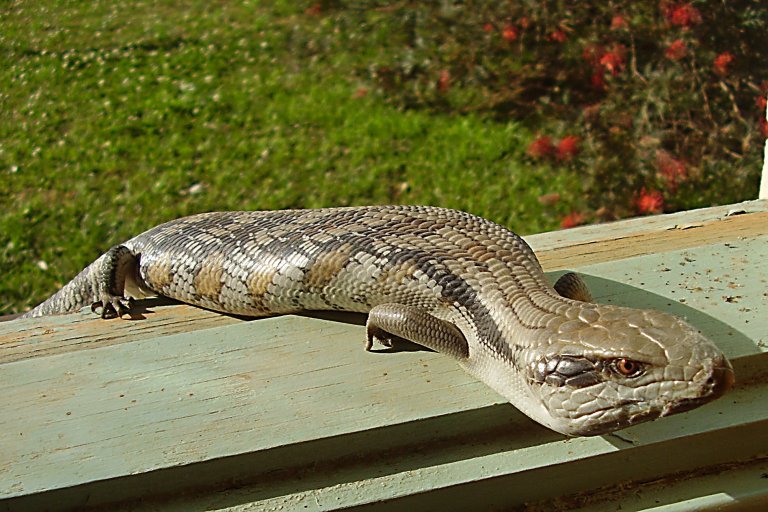








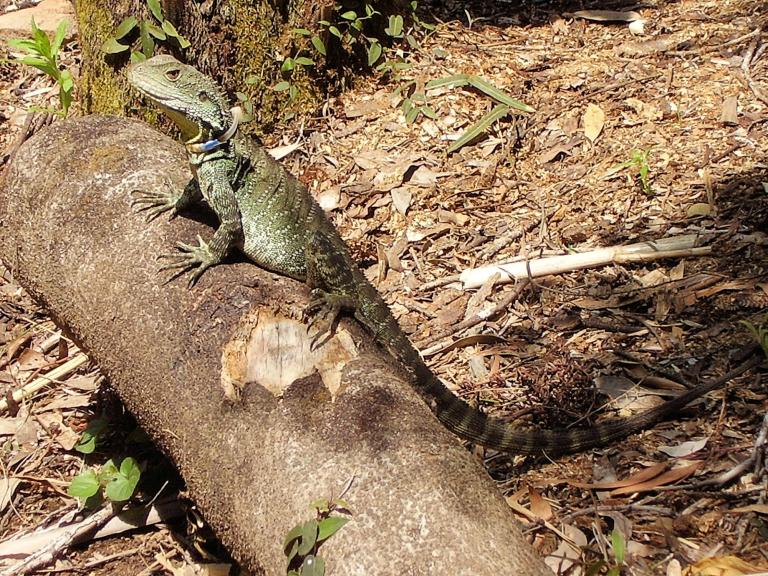
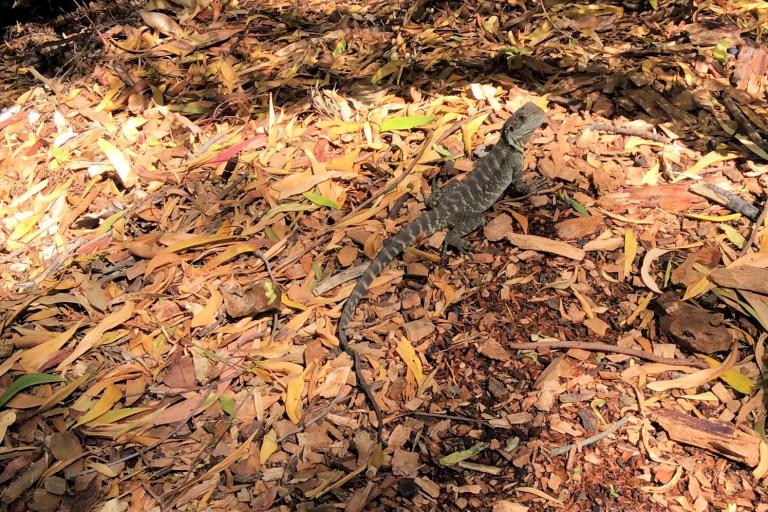
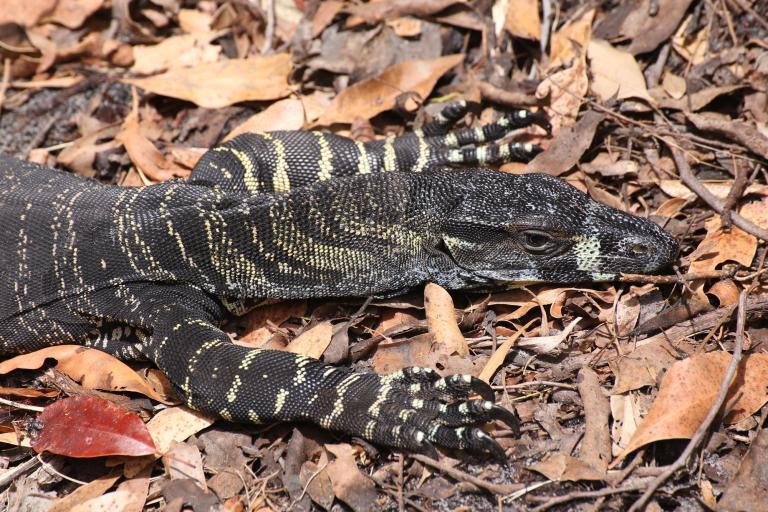
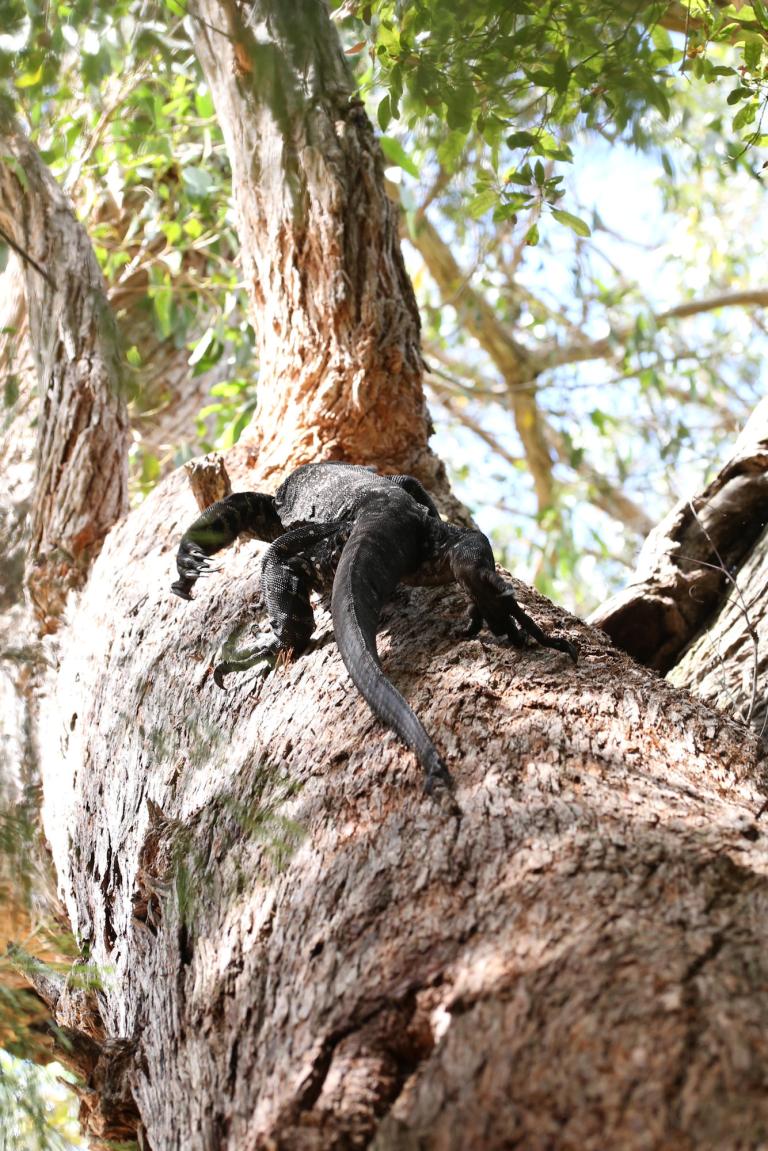






Those skinks are [deleted] huge! The ones I saw in the south U.S. are small. I think I sent some pics in for RWP but they didn’t make the cut.
Nice skink and snake photos! Thanks
A wonderful presentation.
Wow! What a great set! I wish we had this range of reptiles in my corner. Very well done!
Thanks very much for these awesome herps of Oz!
Wonderful photos and great commentary. My, there are a lot of animals that can kill you where you live!
Many years ago I watched an hour-long BBC programme about the most venomous animals in the world. It devoted 3/4 of the time to Australia.
And yet the Honey Bee is responsible for more casualties than any other, closely followed by wasps!
Amazing photos! Thank you.
Great series and stories. I too had always thought of skinks as ‘small’. I’m just as happy not to live with all your venomous snakes. If I lost two pet goats to a snake, I’d be very unhappy with that snake. Thanks.
A great series of Australian herps. I was especially glad to see the turtle (although I’m a big skink fan, we used to have a blue-tongue in the lab) – Australian turtles don’t generally seem to get a lot of coverage.
The death adder, an elapid and thus in the same family as cobras, shows interesting parallelisms to true vipers (Viperidae), not just in body form and hunting habits, but in its evolution of caudal luring.
Small quibble – I think that both the saltwater and Johnson’s crocodiles outrank the perentie as Australia’s largest reptiles.
Agreed, I missed out the important word “terrestrial”. As well as the crocodiles, the sea turtles are larger and heavier than the goannas
Wonderful series. I haven’t seen any snakes yet since moving to Canberra but I’m hopeful. I saw my first Blotched Bluetongue the other day which was pleasing. Thanks for sharing.
These were a real treat, thanks. Beautiful reptiles and terrific photos and commentary, doesn’t get better than that. 👍